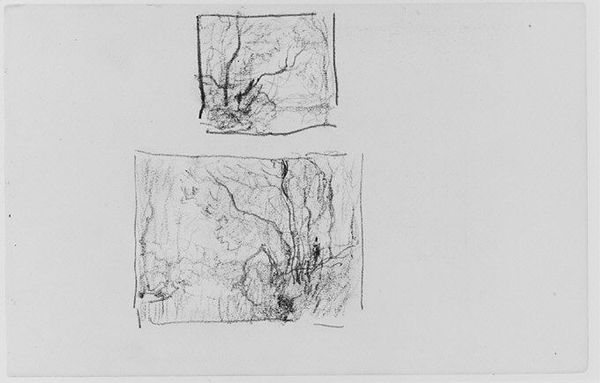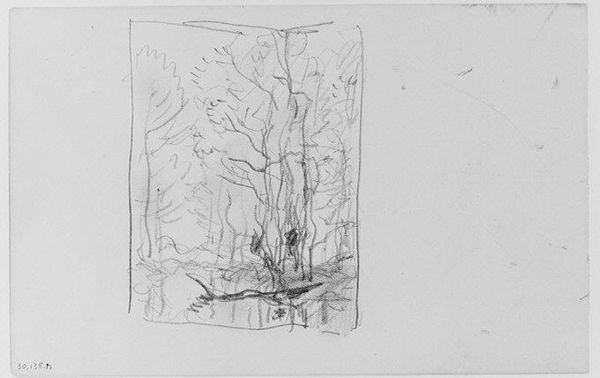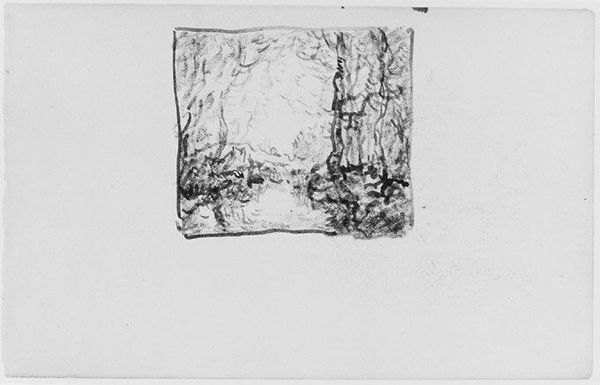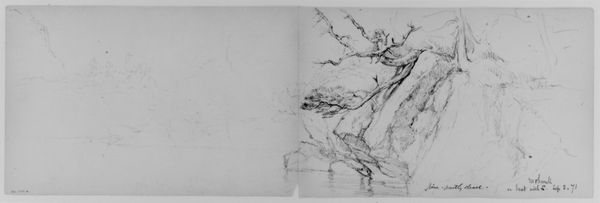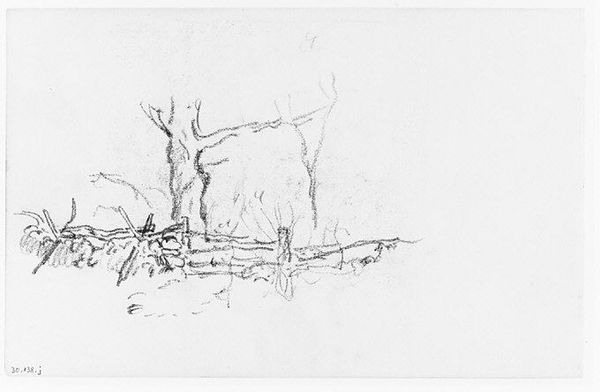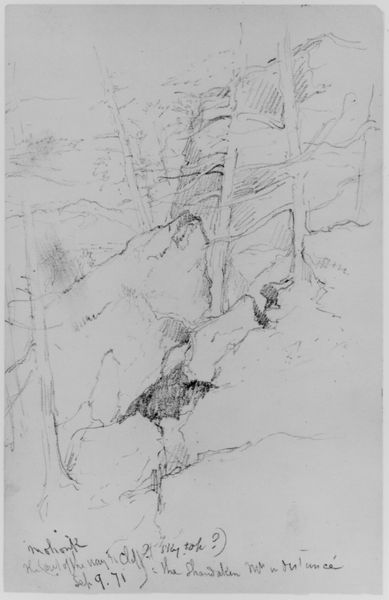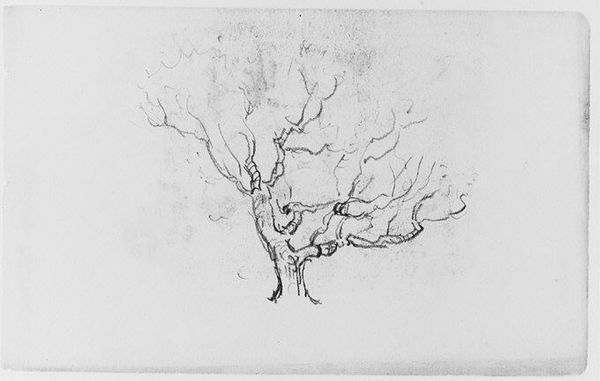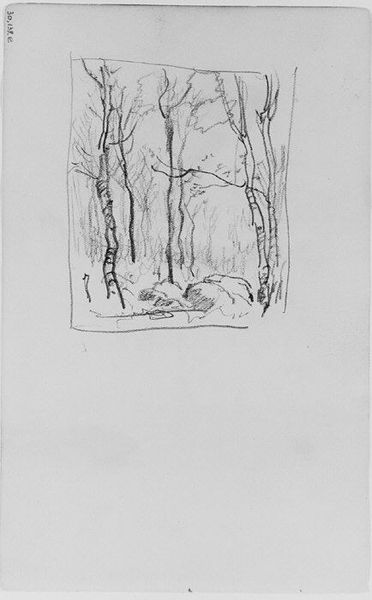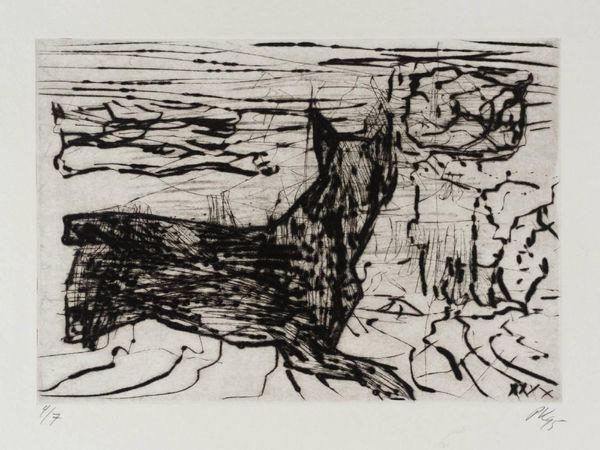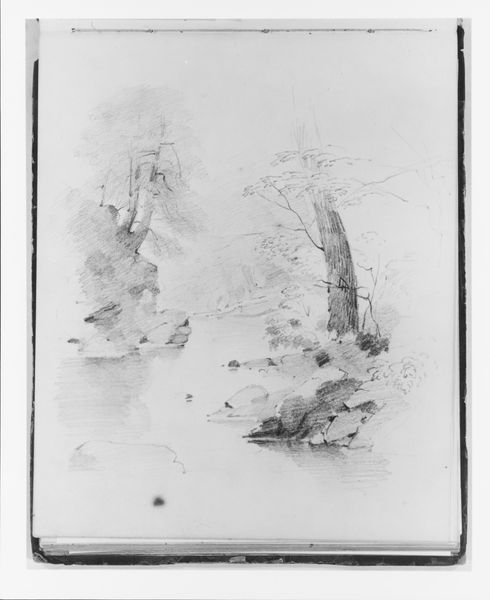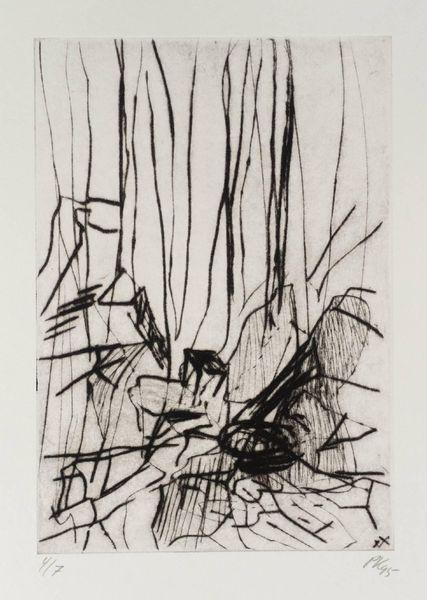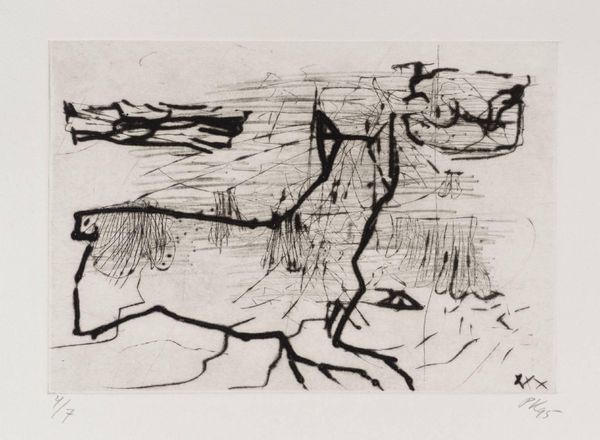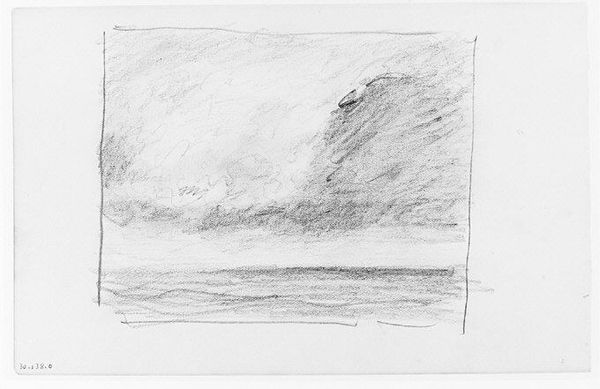
drawing, pencil
#
tree
#
drawing
#
landscape
#
form
#
pencil
#
line
#
realism
Dimensions: Sheet: 4 7/8 x 7 7/8 in. (12.4 x 20 cm)
Copyright: Public Domain
Curator: Looking at this pencil drawing from Henry Ward Ranger, made sometime between 1858 and 1916 and titled "Trees in Wood (from Sketchbook)", I find myself reflecting on how art engages with notions of place. Ranger here offers us a look into the intricate forms found in nature. Editor: Mmm, yes, "intricate" feels right. It has this raw energy, doesn't it? Almost like a whisper of a forest, captured in frantic lines. There’s a brooding quality to it—are these woods welcoming, or maybe a little…threatening? Curator: That brooding quality resonates. Historically, forests are often imbued with symbolic weight. Examining Ranger's American landscape, one could consider how depictions of nature intersect with ideas of national identity, perhaps the exploitation of natural resources, and the often romanticized—yet complicated—relationship settlers have had with the American landscape. Editor: Ah, settlers. Right, right, digging into that tangled history. It’s like trying to untangle those very branches Ranger’s drawn. I see such movement, almost a nervous energy there…It makes me think of rootlessness, you know? Always moving, never quite belonging. Does that track, historically speaking? Curator: Indeed, especially considering how anxieties about urbanization and industrialization also defined artistic movements of this period. Even though Ranger works within what seems like a traditional landscape genre, one can also consider how it’s also about transition, dislocation, about finding one's footing during a time of rapid societal transformation. Editor: Transition... that fits perfectly. I initially felt unsure but with the historical background you laid out, I start to understand how a drawing like this is not only capturing an external image. There is feeling involved. Ranger might even have externalized a sense of internal restlessness using lines, shades, composition... It definitely changes the way one views the artwork. Curator: Precisely. Viewing art requires us to engage with multiple layers, from its formal composition to its engagement with identity and power structures. Editor: Makes you look at a bunch of lines a bit differently, huh? This has truly transformed the experience. Curator: Indeed. Every artwork is a repository of stories, inviting us to reflect, question, and reimagine the world around us.
Comments
No comments
Be the first to comment and join the conversation on the ultimate creative platform.
